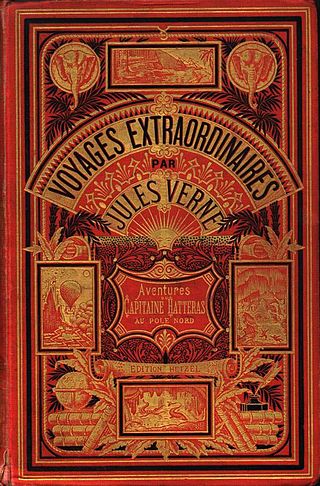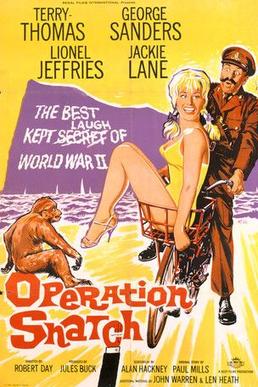
Jules Gabriel Verne was a French novelist, poet, and playwright. His collaboration with the publisher Pierre-Jules Hetzel led to the creation of the Voyages extraordinaires, a series of bestselling adventure novels including Journey to the Center of the Earth (1864), Twenty Thousand Leagues Under the Seas (1870), and Around the World in Eighty Days (1872). His novels, always well-researched according to the scientific knowledge then available, are generally set in the second half of the 19th century, taking into account the technological advances of the time.

From the Earth to the Moon: A Direct Route in 97 Hours, 20 Minutes is an 1865 novel by Jules Verne. It tells the story of the Baltimore Gun Club, a post-American Civil War society of weapons enthusiasts, and their attempts to build an enormous Columbiad space gun and launch three people – the Gun Club's president, his Philadelphian armor-making rival, and a French poet – in a projectile with the goal of a Moon landing. Five years later, Verne wrote a sequel called Around the Moon.

Raphael Semmes was an officer in the Confederate Navy during the American Civil War. He was previously a serving officer in the US Navy from 1826 to 1860.

The Rock of Gibraltar is a monolithic limestone mountain 426 m (1,398 ft) high dominating the western entrance to the Mediterranean Sea. It is situated near the end of a narrow 9 kilometres (5.6 mi) long promontory stretching due south into the Mediterranean Sea and is located within the British territory of Gibraltar, and is 27 km north-east of Tarifa, Spain, the southwestern tip of Europe on the Iberian Peninsula. The rock serves as an impregnable fortress and contains a labyrinthine network of man-made tunnels known as the Tunnels of Gibraltar. Most of the Rock's upper area comprises a nature reserve which is home to about 300 Barbary macaques. It is a major tourist attraction.

The Barbary macaque, also known as Barbary ape, is a macaque species native to the Atlas Mountains of Algeria, Tunisia and Morocco, along with a small introduced population in Gibraltar. It is the type species of the genus Macaca. The species is of particular interest because males play an atypical role in rearing young. Because of uncertain paternity, males are integral to raising all infants. Generally, Barbary macaques of both sexes and all ages contribute in alloparental care of young.

The Voyages extraordinaires is a collection or sequence of novels and short stories by the French writer Jules Verne.

Pierre-Jules Hetzel was a French editor and publisher celebrated for his extraordinarily lavishly illustrated editions of Jules Verne's novels, highly prized by collectors.

Operation Snatch is a 1962 British comedy film starring Terry-Thomas and George Sanders and directed by Robert Day.

Michel Jean Pierre Verne was a writer, editor, and the son of Jules Verne.

Clovis Dardentor is an 1896 fiction novel by French writer Jules Verne, written partly as a travel narrative. Compared to other Verne novels, it is a relatively unknown work.

Off on a Comet is an 1877 science fiction novel by French writer Jules Verne. It recounts the journey of several people carried away by a comet contacting the Earth. The comet passes by various bodies in the Solar System before returning the travelers to the Earth.

Dr. Ox's Experiment is a humorous science fiction short story by the French writer Jules Verne, published in 1872. It describes an experiment by one Dr. Ox, and is inspired by the real or alleged effects of oxygen on living things.

Mutineers of the Bounty, translated in English by English writer W. H. G. Kingston, is a short story by Jules Verne. The story is based on British documents about the Mutiny on the Bounty and was published in 1879 together with the novel The Begum's Fortune, as a part of the series Les Voyages Extraordinaires.

Originally from the Atlas Mountains and the Rif Mountains of Morocco, the Barbary macaque population in Gibraltar is the only wild monkey population on the European continent. Although most Barbary monkey populations in Africa are experiencing decline due to hunting and deforestation, the Gibraltar population is increasing. As of 2020, some 300 animals in five troops occupy the Upper Rock area of the Gibraltar Nature Reserve, though they make occasional forays into the town. As they are a tailless species, they are also known locally as Barbary apes or rock apes, despite being classified as monkeys. Spanish speakers simply refer to them as monos when conversing in Spanish, although English is the native language as the area is a British overseas territory.

Sgt. Alfred Holmes was a Gibraltarian sergeant of the Gibraltar Regiment. He was a well remembered Officer-in-Charge of the Apes who held this position, caring for the Gibraltar Barbary macaques, for over 38 years. He described the macaques as "Gibraltar's greatest treasure".

The Alameda Wildlife Conservation Park (AWCP) is a small wildlife park situated in the Botanic Gardens in Gibraltar.

The Gibraltar Nature Reserve is a protected nature reserve in the British Overseas Territory of Gibraltar that covers over 40% of the territory's land area. It was established as the Upper Rock Nature Reserve in 1993 under the International Union for Conservation of Nature's category Ia and was last extended in 2013. It is known for its semi-wild population of Barbary macaques, and is an important resting point for migrating birds.

Jules Verne (1828–1905) was a French novelist, poet, and playwright. Most famous for his novel sequence, the Voyages Extraordinaires, Verne also wrote assorted short stories, plays, miscellaneous novels, essays, and poetry. His works are notable for their profound influence on science fiction and on surrealism, their innovative use of modernist literary techniques such as self-reflexivity, and their complex combination of positivist and romantic ideologies.

In the Year 2889 is an 1889 short story published under the name of Jules Verne, but now believed to be mainly the work of his son Michel Verne, based on his father's ideas. The first publication was in English in February 1889, in the American magazine The Forum.



















